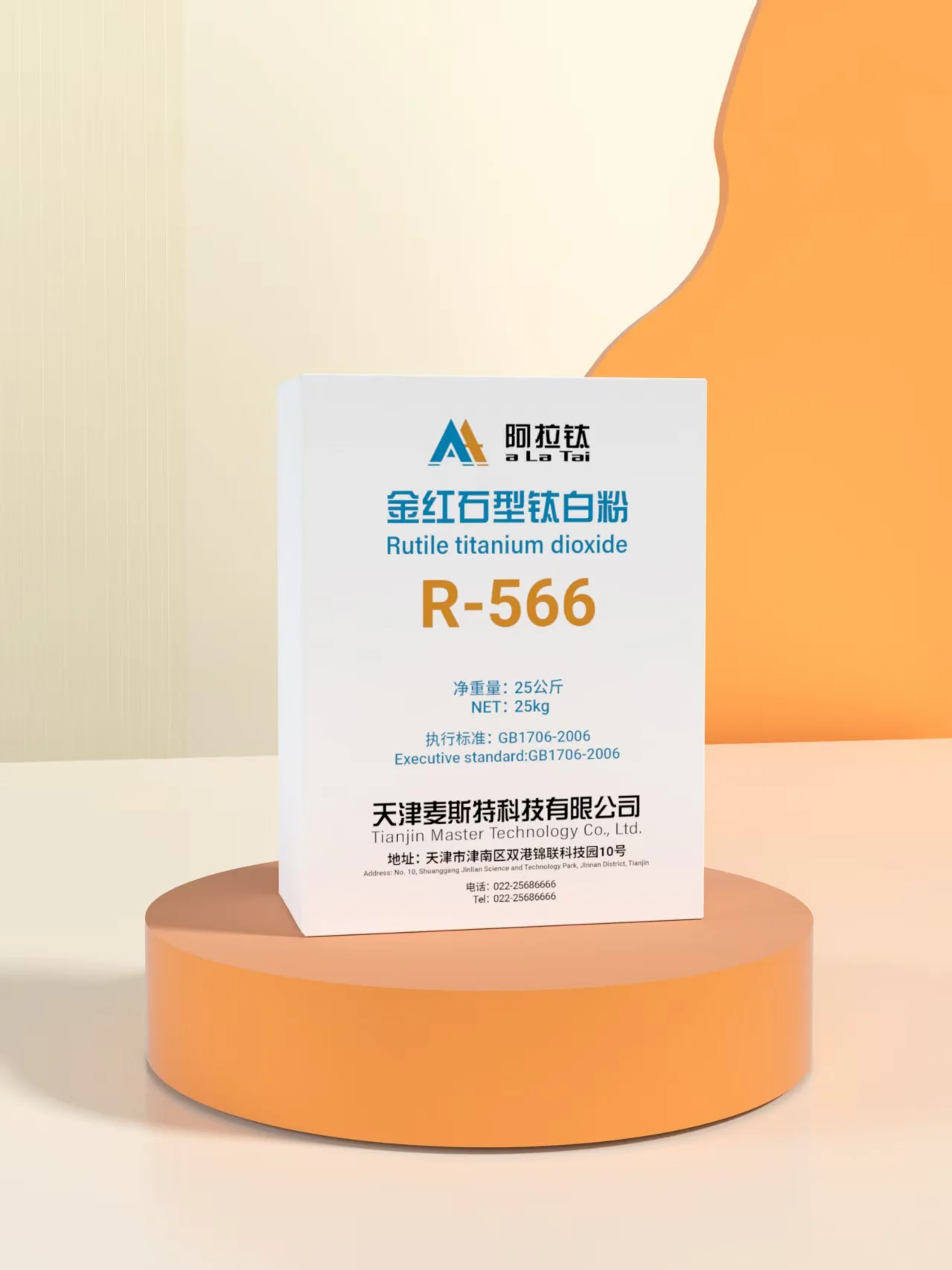- This topic is empty.
-
AuthorPosts
-
2025-09-22 at 2:29 pm #86638
Introduction to Titanium Dioxide in Plastics
In the plastics industry, achieving superior color quality, brightness, and durability is essential. One of the most effective solutions is rutile titanium dioxide pigment for plastics, which serves as a high-performance whitening and opacifying agent. Known for its stability and excellent hiding power, this pigment enhances not only the appearance of plastics but also their long-term resistance to environmental stress.
Among many options, the R-566 grade stands out due to its advanced production technology and reliable specifications. Produced with innovative surface treatment and calcination processes, this pigment is designed to meet the high demands of plastic applications ranging from PVC profiles to masterbatches. In this blog post, ALATAI, a high-end titanium dioxide manufacturer, will share the the benefits of rutile titanium dioxide pigment for plastics, its applications, etc.
Why Choose Rutile Titanium Dioxide for Polymer Applications
The rutile form of TiO2 is preferred over the anatase form because of its higher refractive index, greater durability, and superior UV resistance. In polymer systems, these properties translate into:
-
Improved color strength and tinting performance.
-
Enhanced opacity with reduced pigment loading.
-
Resistance to weathering, ensuring plastics retain gloss and brightness over time.
-
Stability against heat, making it suitable for high-temperature plastic processing.
These advantages make rutile pigments indispensable in plastics manufacturing.
Technical Highlights of R-566 Titanium Dioxide Pigment
The R-566 grade rutile titanium dioxide has been developed using advanced techniques, including inorganic coating, organic treatment, and precise particle size control. Its formulation provides a balance between dispersibility and durability, ensuring consistent performance in different polymer matrices.
Key specifications include:
-
TiO₂ Content: ≥94.0%
-
Brightness: ≥94.6%
-
Oil Absorption: ≤18
-
Rutile Content: ≥99.2%
-
Tint-Reducing Power: ≥1860
-
Dispersibility: ≥5.75
-
pH Value: 6.5–8.0
-
Compliance with ISO591-1:2000(E) R2 and ASTM D476-00 V
These specifications demonstrate the pigment’s ability to deliver consistent whiteness, low oil absorption, and superior tinting efficiency, which are crucial for plastic processors.

Benefits of R-566 in Plastic Manufacturing
1. High Dispersibility
One of the challenges in using pigments is achieving uniform dispersion in polymers. The R-566 rutile pigment exhibits excellent dispersibility, which ensures smooth color distribution in the final plastic product.
2. Strong Hiding Power
Because of its high refractive index, this pigment offers strong covering power. Plastics manufacturers can achieve desired opacity with less pigment, reducing overall material costs.
3. Weather and UV Resistance
Plastics exposed to sunlight are prone to yellowing and degradation. The UV-resistant rutile titanium dioxide protects polymers, keeping them bright and glossy for extended periods.
4. Low Oil Absorption
Lower oil absorption means better compatibility with plasticizers and resins, improving flow properties during processing and reducing energy consumption in extrusion or molding.
5. High Gloss Finish
Aesthetic appeal is critical in consumer plastics. R-566 ensures a glossy surface finish that enhances the perceived quality of products.
Applications of Rutile Titanium Dioxide Pigment in Plastics
The versatility of titanium dioxide pigment for plastic applications makes it suitable across multiple product categories:
-
PVC Profiles: Provides long-lasting whiteness and resistance against outdoor exposure.
-
Masterbatches: Ensures strong tinting strength and stable dispersion in concentrate formulations.
-
General Plastics: Used in packaging, films, and molded components for brightness and opacity.
-
Specialty Polymers: Supports applications in engineering plastics requiring heat and UV resistance.
Its adaptability extends beyond plastics, being also valuable in coatings, inks, and paper production.
Packaging and Handling Solutions
For ease of transport and storage, R-566 rutile titanium dioxide is available in multi-layer paper-plastic bags of 25 kilograms each. Bulk packaging options of 500 kg and 1,000 kg are also offered to meet industrial-scale demands. Proper packaging ensures product integrity and prevents contamination during logistics.
Comparing Rutile Titanium Dioxide Grades for Plastics
When selecting a titanium dioxide pigment for polymers, manufacturers often evaluate properties like dispersibility, hiding power, and oil absorption. The R-566 grade excels in balancing these features, making it a strong competitor among premium pigment grades.
Unlike lower-grade alternatives, R-566 provides higher brightness and tinting efficiency, which reduces consumption per ton of plastic resin. This cost-efficiency, combined with performance stability, makes it a preferred choice in high-value applications.
Sustainability and Efficiency in Plastic Pigments
With increasing attention to sustainability, pigments must deliver performance while supporting efficient resource use. The R-566 rutile TiO₂ pigment contributes to this goal by:
-
Reducing pigment dosage due to its strong hiding power.
-
Extending the life cycle of plastic products with UV and weather resistance.
-
Minimizing waste during processing through high dispersibility and low oil absorption.
Such features align with global efforts toward greener manufacturing in plastics.
Industry Standards and Certifications
Compliance with international standards ensures consistency and reliability. R-566 meets ISO591-1:2000(E) R2 and ASTM D476-00 V classifications, confirming its suitability as a professional-grade pigment for plastic applications. Manufacturers seeking dependable supply chains and certified raw materials will find R-566 to be a trustworthy option.
Conclusion
The role of rutile titanium dioxide pigment for plastics extends far beyond simple whitening. It is a performance enhancer that improves opacity, durability, gloss, and UV resistance. The R-566 grade, with its advanced treatment processes and precise quality control, stands as a premium choice for manufacturers aiming to balance performance, efficiency, and sustainability.
Whether applied in PVC profiles, masterbatches, or general-purpose polymers, this pigment ensures lasting quality and aesthetic appeal, making it an essential material in modern plastics engineering.
http://www.titanmastech.com
ALATAI -
-
AuthorPosts
- You must be logged in to reply to this topic.